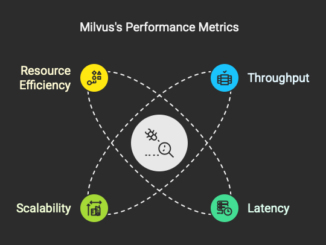What is Distributed SQL? A Complete Guide to Modern Database Architecture
Introduction
In today’s data-driven world, businesses need databases that can scale globally while maintaining the reliability and consistency of traditional SQL systems. Distributed SQLrepresents a revolutionary approach to database management, combining the best features of SQL and NoSQL technologies to meet modern enterprise demands.
Understanding Distributed SQL Databases
Definition and Core Concept
Distributed SQL is a category of relational databases that merges the fundamental capabilities of traditional SQL and NoSQL systems. These databases maintain strong consistency while natively providing ACID transactional support across data centers, availability zones, and regions in cloud environments.
At its core, a distributed SQL database functions as a single logical relational database deployed across a cluster of network servers. This architecture automatically replicates and distributes data among multiple servers (nodes), enabling both read and write operations for complex queries.
How Distributed SQL Works
The operational framework of distributed SQL involves several key components:
- Node Communication: Individual servers communicate with each other to form a network cluster
- Global Distribution: Clusters can span across data centers or geographically distributed locations worldwide
- Automatic Orchestration: The database system manages how nodes collaborate to store, balance, replicate, and retrieve data
- Intelligent Query Processing: When querying tables, the system determines optimal access paths regardless of data location
The Evolution of Distributed SQL
Historical Context
Distributed SQL databases emerged in the mid-2010s specifically designed for transactional applications. This timing coincided with the growing need for databases that could handle:
- Massive scale requirements
- Global user bases
- High availability demands
- Complex transactional workloads
Bridging SQL and NoSQL
These systems successfully deliver core features found in both relational (SQL) and non-relational (NoSQL) databases, creating a hybrid solution that addresses the limitations of each approach.
Key Differences: Traditional SQL vs. Distributed SQL
Traditional SQL Database Limitations
Monolithic SQL databases, while reliable, face several constraints in modern environments:
- Limited scalability options
- Single points of failure
- Geographic distribution challenges
- Resource allocation inefficiencies
Distributed SQL Advantages
Unlike monolithic SQL databases, distributed SQL systems offer:
1. Enhanced Resilience
- Failure Protection: Robust safeguards for critical data and applications
- Automatic Recovery: Built-in mechanisms to handle node failures
- Data Redundancy: Multiple copies of data across different locations
2. Horizontal Scalability
- Dynamic Scaling: Easy support for workload increases and decreases
- Distributed Transactions: Seamless handling of complex, multi-node transactions
- Business Growth Support: Infrastructure that grows with organizational needs
3. Global Distribution Capabilities
- Multi-Region Support: Cluster topology spanning multiple regions
- Cloud Provider Flexibility: Support across different cloud platforms
- Always-On Experience: Consistent performance for users worldwide
4. SQL Compatibility
- Standard Features: High level of SQL compatibility
- Familiar Interface: Traditional relational database management functionality
- Easy Migration: Simplified transition from existing SQL systems
5. Modern Architecture Alignment
- Container Support: Native compatibility with containerized environments
- Kubernetes Integration: Seamless operation in Kubernetes clusters
- Developer Agility: Enhanced business agility through modern deployment patterns
6. Advanced Analytics and Security
- Real-Time Analysis: Improved data visibility for immediate insights
- Security Enhancement: Reduced security risks through better data analysis
- Operational Intelligence: Better understanding of system performance and usage patterns
Geo-Distribution and Latency Management
The Physics of Global Data Access
One of the most significant challenges in distributed systems is managing latency across geographical distances. Distributed SQL databases are engineered to work around the fundamental physics of data transmission, implementing sophisticated strategies to minimize response times while maintaining consistency.
Optimization Strategies
- Data Locality: Placing data closer to users who need it most
- Intelligent Routing: Automatic selection of optimal data access paths
- Caching Mechanisms: Strategic data caching to reduce retrieval times
- Load Balancing: Even distribution of queries across available nodes
Benefits for Modern Enterprises
Operational Advantages
- Reduced Complexity: Single database interface managing distributed infrastructure
- Cost Efficiency: Optimized resource utilization across multiple nodes
- Improved Performance: Better response times through distributed processing
- Enhanced Reliability: Multiple failure points eliminated through redundancy
Strategic Benefits
- Global Reach: Ability to serve customers worldwide with consistent performance
- Scalability: Infrastructure that adapts to business growth
- Future-Proofing: Architecture designed for evolving technological landscapes
- Competitive Advantage: Faster, more reliable applications than traditional approaches
Implementation Considerations
Planning Your Migration
When considering distributed SQL implementation:
- Assess Current Workloads: Evaluate existing database performance and limitations
- Define Requirements: Identify specific scalability and distribution needs
- Plan Architecture: Design cluster topology based on user distribution
- Consider Compliance: Ensure data residency requirements are met
Best Practices
- Start Small: Begin with pilot projects to understand system behavior
- Monitor Performance: Implement comprehensive monitoring from day one
- Plan for Growth: Design with future scaling requirements in mind
- Train Teams: Ensure staff understand distributed system concepts
Conclusion
Distributed SQL represents a significant evolution in database technology, addressing the limitations of both traditional SQL and NoSQL systems. By combining strong consistency, ACID compliance, and horizontal scalability, these databases provide the foundation for modern, globally distributed applications.
As businesses continue to expand globally and data volumes grow exponentially, distributed SQL databases offer the reliability, performance, and scalability needed to succeed in today’s competitive landscape. The technology bridges the gap between traditional database reliability and modern scalability requirements, making it an essential consideration for any organization planning for future growth.
Whether you’re building new applications or modernizing existing systems, understanding distributed SQL capabilities can help you make informed decisions about your data architecture strategy.
Further Reading:
Choosing the Right Database: MariaDB vs. MySQL, PostgreSQL, and MongoDB
10 Essential JSON Functions in MySQL 8.0
MariaDB Thread Contention Troubleshooting
Troubleshooting ProxySQL in High-Velocity Data Ingestion: Critical Pitfalls and Expert Solutions


